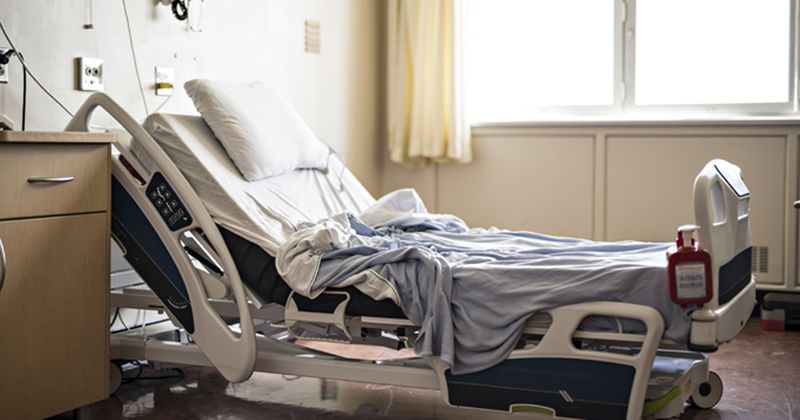Chlorine no more effective than water at killing C. difficile, study finds
Key takeaways:
- Chlorine-based bleach may not kill C. difficile despite its role as a primary disinfectant.
- More effective biocides and other methods should be used in areas where patients have C. difficile infection.
Chlorine-based bleach cleaning solutions are no more effective at killing Clostridioides difficile on surfaces and hospital scrubs than water, a study found.
In the United States and United Kingdom, bleach — chlorine mixed with sodium hydroxide to form sodium hypochlorite (NaOCl) — is a first-line disinfectant to reduce C. difficile infections (CDIs) caused by surface and fabric contamination.

Studies have been mixed on the efficacy of bleach, with some showing that it reduces the recovery of C. difficile spores in non-CDI patient rooms or that a switch to quarternary ammonium to dilute bleach is more effective in rooms where patients with CDI have been treated.
“We were trying to understand how C. difficile spores transfer and persist in the hospital and clinical environment,” Tina Joshi, PhD, associate professor of molecular microbiology at the University of Plymouth in the United Kingdom, told Healio. “What we found was surprising. The fact that spores survive chlorine disinfection means that they can still readily transmit and could infect susceptible patients.”
Joshi and colleagues exposed three clinically relevant strains of C. difficile to in-use concentrations of NaOCl disinfectant at concentrations of 1,000 parts per million (ppm), 5,000 ppm and 10,000 ppm, neutralizing biocide activity after 10 minutes of contact time. They measured the reduction in spore germination compared with control strains that had been exposed to water instead of NaOCl.
According to the study, spores from all three strains showed tolerance to NaOCl, with no significant difference from exposure to water. In further tests of spores adhering to surgical scrubs and patient gowns, the researchers found that spore recovery decreased somewhat in two C. difficile strains, but overall, NaOCl did not prevent recovery.
Although spore survival appeared to decrease as the NaOCl concentration increased, overall, the researchers said the extent of biocide tolerance in C. difficile warrants a review of disinfection and infection prevention guidelines.
Joshi said the main takeaway from the study is that disinfecting areas where patients with CDI are located should include “effective biocides” or other proven means. Keeping up to date with current research developments to get ahead of tolerance is also key, she added.
“If hospital trusts are relying on chlorine disinfectants to clean dirty or soiled areas, then they may not be destroying the spores that cause [C. difficile] infection,” Joshi said. “This could lead to continued incidence of C. difficile infection within the clinical environment and may be a reason why some hospitals are not seeing a reduction in C. difficile infection levels despite trying to disinfect.”
References:
- Ahmed H, et al. Microbiology 2023;doi:10.1099/mic.0.001418.
- EPA. List K: Antimicrobial products registered with EPA for claims against Clostridium difficile spores. https://www.epa.gov/pesticide-registration/list-k-antimicrobial-products-registered-epa-claims-against-clostridium. Last updated Oct. 4, 2023. Accessed Nov. 27, 2023.
- Public Health England. Guidance: Clostridioides difficile: What it is, how to prevent, how to treat. https://www.gov.uk/government/publications/clostridium-difficile-what-it-is-how-to-prevent-how-to-treat. Last updated Sept. 6, 2019. Accessed Nov. 27, 2023.
